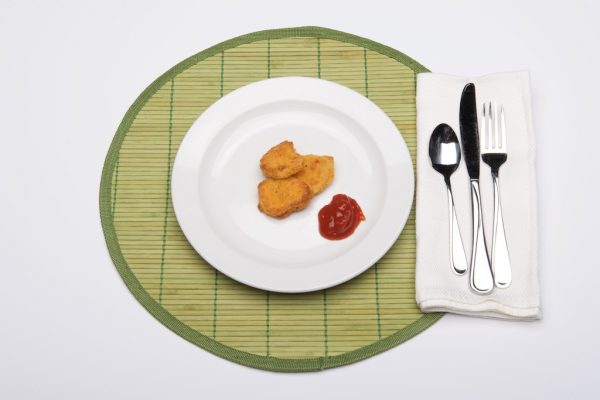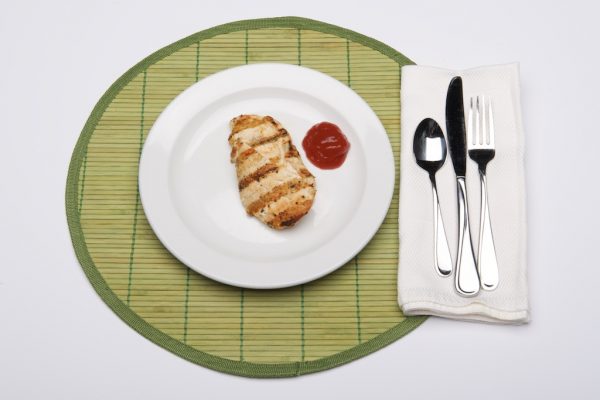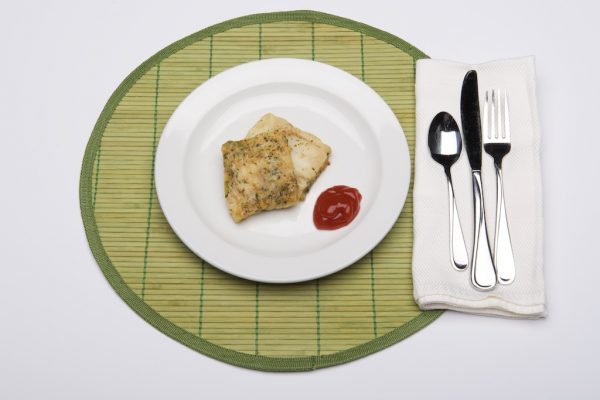Getting your preschooler to stop playing and sit down to dinner is challenging enough, let alone getting her to eat the nutritious meal you just prepared.
Preschoolers are picky by nature. For some kids, fussy eating is a fleeting stage. For others, it can become an ongoing challenge and make mealtime a stressful, chaotic experience for everyone involved.
“If a child isn’t eating a variety of foods, her diet may be lacking in important nutrients, such as iron, vitamin D and zinc,” said Annelise Johnson, a speech-language pathologist at Akron Children’s. “Selective eating can eventually affect a child’s growth.”
Good nutrition is important for healthy growth and development, and it sets the stage for a lifetime of healthy eating. What are parents to do when their child won’t eat anything other than macaroni and cheese, chicken fingers and pizza?
In recent years, a new practice called “food chaining” has emerged in many households that is helping kids double the number of foods they like to eat. It’s a research-proven strategy as described in the book, “Food Chaining: The Proven 6-step Plan to Stop Picky Eating, Solve Feeding Problems and Expand Your Child’s Diet” by Cheri Fraker.
The technique builds on a child’s successful eating experiences by creating a series of links between those foods she eats well to new foods you wish her to eat. The links build on one another, making small variations on the food a child eats well to gradually introducing new varieties. The child is more likely to eat the new variety because it’s similar to the food she already enjoys eating.
“When done correctly, food chaining can be a very effective strategy to expand the foods within a child’s diet because it is based off of a child’s natural preferences and builds upon other successful eating experiences,” said Johnson. “If it looks familiar to their preferred foods, they are more likely to try new things.”
This unique feeding therapy has been practiced in the medical field for quite some time for children with autism, severe aversions to textures or other feeding problems. In recent years, it’s also being practiced at home.
Johnson gives tips on how parents can get started and try this in their own homes to double the number of foods their preschooler eats.
Creating your own food chain
When creating a food chain, start with your child’s favorite foods to lead her on the path to healthier fare.
Be sure not to start a food chain with your child’s most nutritious food, however. When you alter a child’s favorite food, you run the risk that they won’t want to eat it anymore. So if you lose French fries, it’s no biggie. But if she stops eating the most nutritious item in her diet, that’s a problem.
Look for patterns within her favorite foods that your child consistently eats. Patterns may include things like taste (salty, sweet, savory, spicy), texture (smooth, crunchy, lumpy) and temperature. Think about why she likes it. Is it hot? Is it wet? Is it crunchy?
“Parents must first understand what is meant by a ‘food chain,’” said Johnson. “A food chain is a list of foods that have the same features, such as flavor, texture or shape, as the ones your child currently eats.”
Offer foods that are very similar to the ones your child enjoys eating and is very likely to eat. At first, start with a slight variation, maybe a different brand of chicken nuggets and then choose something with the same texture, like grilled chicken. Use properties that are similar to create the branch to the new variety.
After each introduction, ask your child to rate the new food on a scale of 1 to 5, with 5 being she likes it so much that she’d like to try it again next time. If it’s a 1 or a 2, take a step back and make a smaller change. If it’s a 3 or 4, keep offering it.
Once your child has accepted some of these new foods, you can move onto the next level of the food chain. Introduce foods that are still similar, but may have a different pattern, such as flavor or texture. Then, you can try adding dipping sauces. Don’t be deterred if your child doesn’t try the new linked food the first time. It may take 10, 20 or even 30 repetitions before it becomes familiar enough for her to try it. A major step forward may be your child now picks up and smells a food that previously caused a temper tantrum.
“Don’t trick your child into eating it either,” said Johnson. “These kids are picky, and they will notice. If you trick them, they won’t trust that food and you run the risk of losing it altogether. Include your child in the process instead, and talk to them about what you’re giving them.”
Keep it as pleasant as possible with the least amount of pressure, she adds. Get creative and have fun with it. “The goal is to expand a child’s flavor acceptance,” said Johnson. “Once she’s accepted a new flavor, you can include healthier options with ingredient substitutes.”
If you’re getting into a mealtime battle, stop food chaining. There may be a medical reason as to why she’s not interested. Talk to your pediatrician to find out where the breakdown is happening.
Sample food chains
From chicken nuggets to grilled fish
- Favorite chicken nuggets with ketchup
- A generic brand of chicken nuggets with ketchup
- Grilled chicken with ketchup
- Grilled fish with ketchup




From restaurant French fries to baked potato
- Favorite restaurant French fries
- A generic brand of French fries
- Tater tots
- Potato wedges
- Baked potato (then, try adding healthy toppings)
From baby carrots to salad
- Baby carrots with ranch dressing
- Matchstick carrots with ranch dressing
- Matchsticks carrots and cucumbers with ranch dressing
- Matchstick carrots and cucumber, and small pieces of lettuce with ranch dressing
- Salad with ranch dressing










